‘Studying Early Modern France: Archives, Texts, Images’: Hands-On Workshop in Special Collections
This week with have a guest post by Bram van Leuveren. On 4 December 2015 he led a workshop at the Martyrs Kirk Napier Reading Room using Special Collections material, as part of his training programme ‘Studying Early Modern France: Archives, Texts, Images’. You can read other posts in this series on his blog http://studyingemfrance.wp.st-andrews.ac.uk.
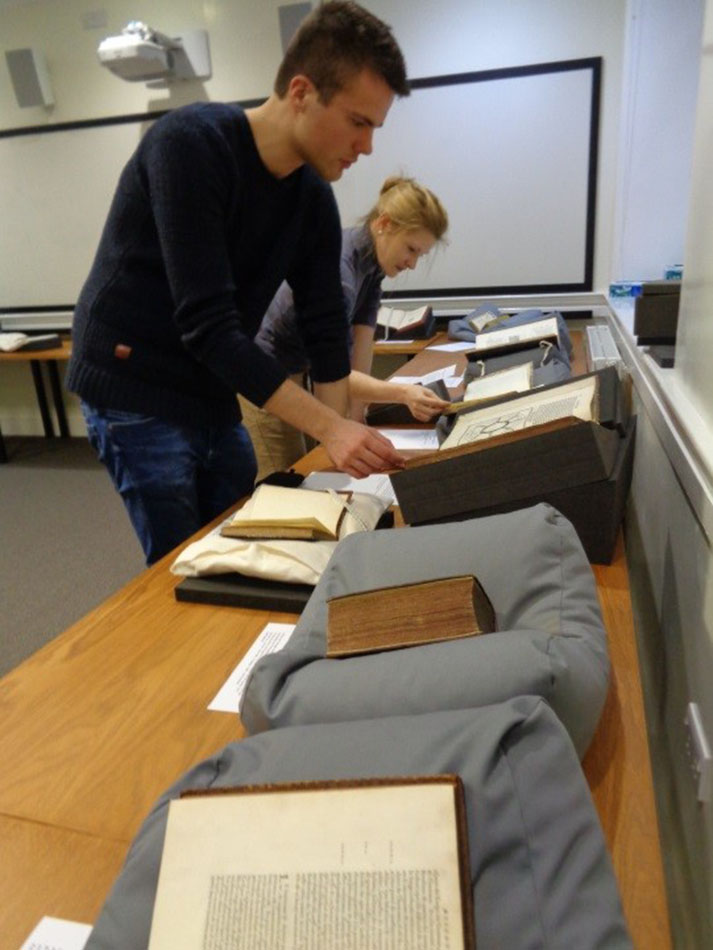 For the final session of my postgraduate training programme ‘Studying Early Modern France: Archives, Texts, Images’ we headed over to the Special Collections of the University of St Andrews in the Martyrs Kirk Research Library. We browsed some of the original editions we’ve had reference to in earlier sessions (especially Graeme Kemp and Shanti Graheli’s session on the French book world in the Renaissance) as well as some manuscripts dating from the early modern period, with a French provenance.
For the final session of my postgraduate training programme ‘Studying Early Modern France: Archives, Texts, Images’ we headed over to the Special Collections of the University of St Andrews in the Martyrs Kirk Research Library. We browsed some of the original editions we’ve had reference to in earlier sessions (especially Graeme Kemp and Shanti Graheli’s session on the French book world in the Renaissance) as well as some manuscripts dating from the early modern period, with a French provenance.
Gabriel Sewell (Head of Special Collections and Assistant Director of Library Services) and Rachel Hart (Muniments Archivist and Deputy Head of Special Collections) gave brief introductions to some of the major items on display, ranging from fine illuminated manuscripts to learned tomes by significant authors, and kindly answered any question we might have about the sources.
Since it would be rather unwieldy to convey in words the ‘qualia’ of doing archival research—i.e. what it’s like to turn the pages of an age-old document—I decided to make a collage of photos* of some of the prettiest and most interesting sources on display. If you want to consult any of the selected items, please email Special Collections ([email protected]) requesting the document(s).
*All photos are taken by me, unless otherwise specified.
Franciscan Gradual (early-fifteenth-century)
Callmark: msM2148.G7
Produced around 1400 in the south of France, this Franciscan Gradual is the largest and second heaviest manuscript in the University’s Special Collections (51 x 36cm). The choir book was big enough for a group of monks to gather around and sing the daily mass. It includes beautifully inventive pen decorated initials with animals (e.g. serpents, dogs), human faces, flowers, fleur-de-lis, trees and abstract, more geometrical designs.
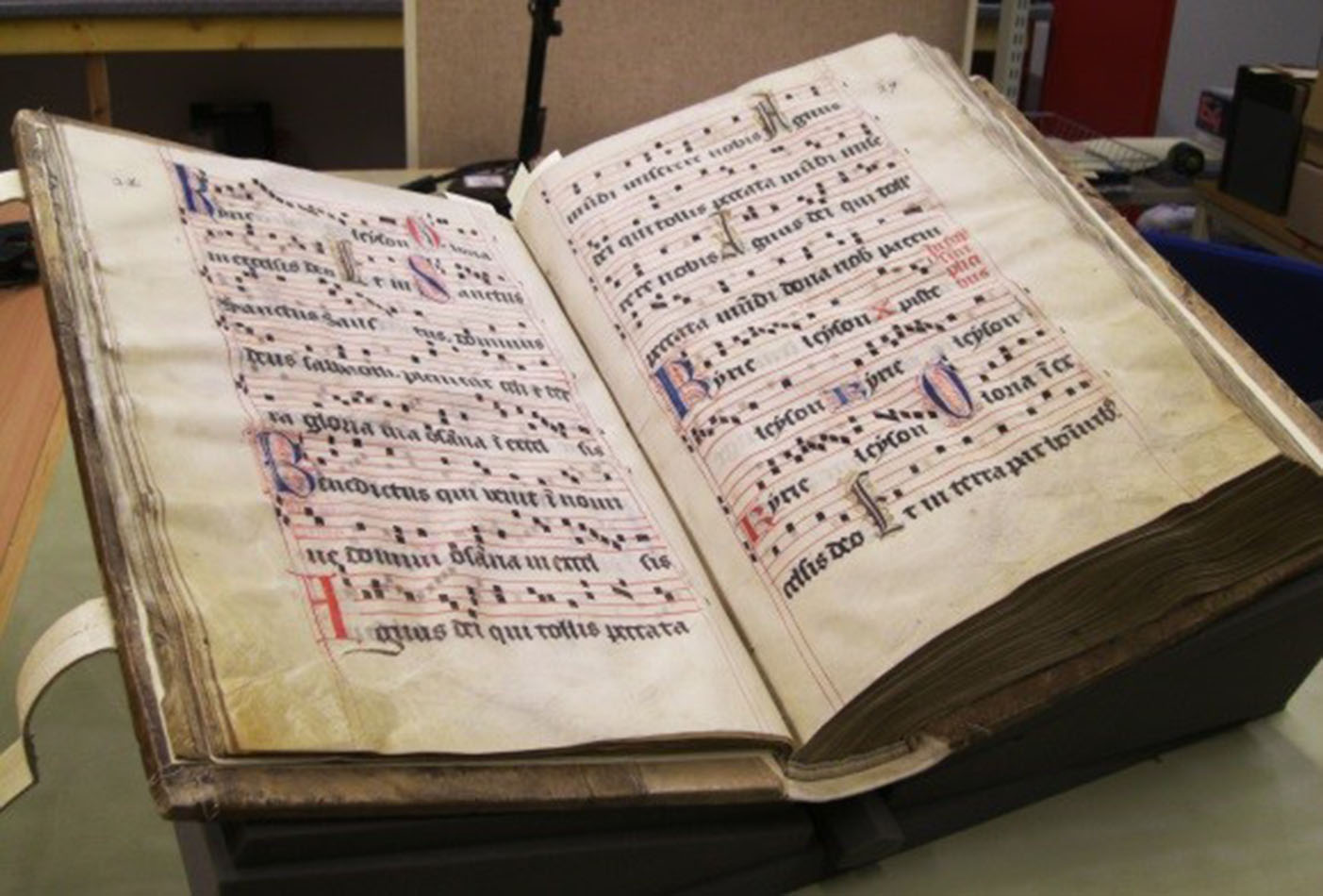
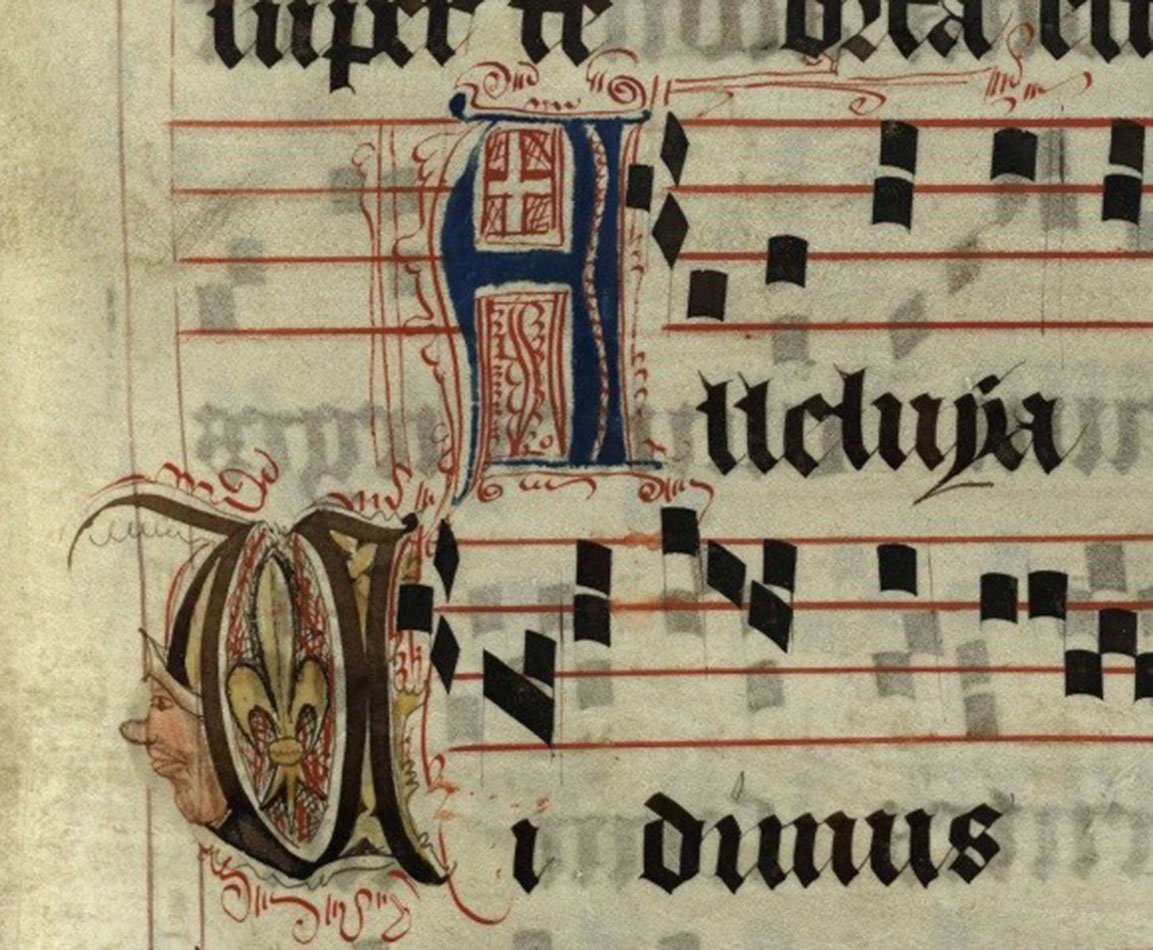
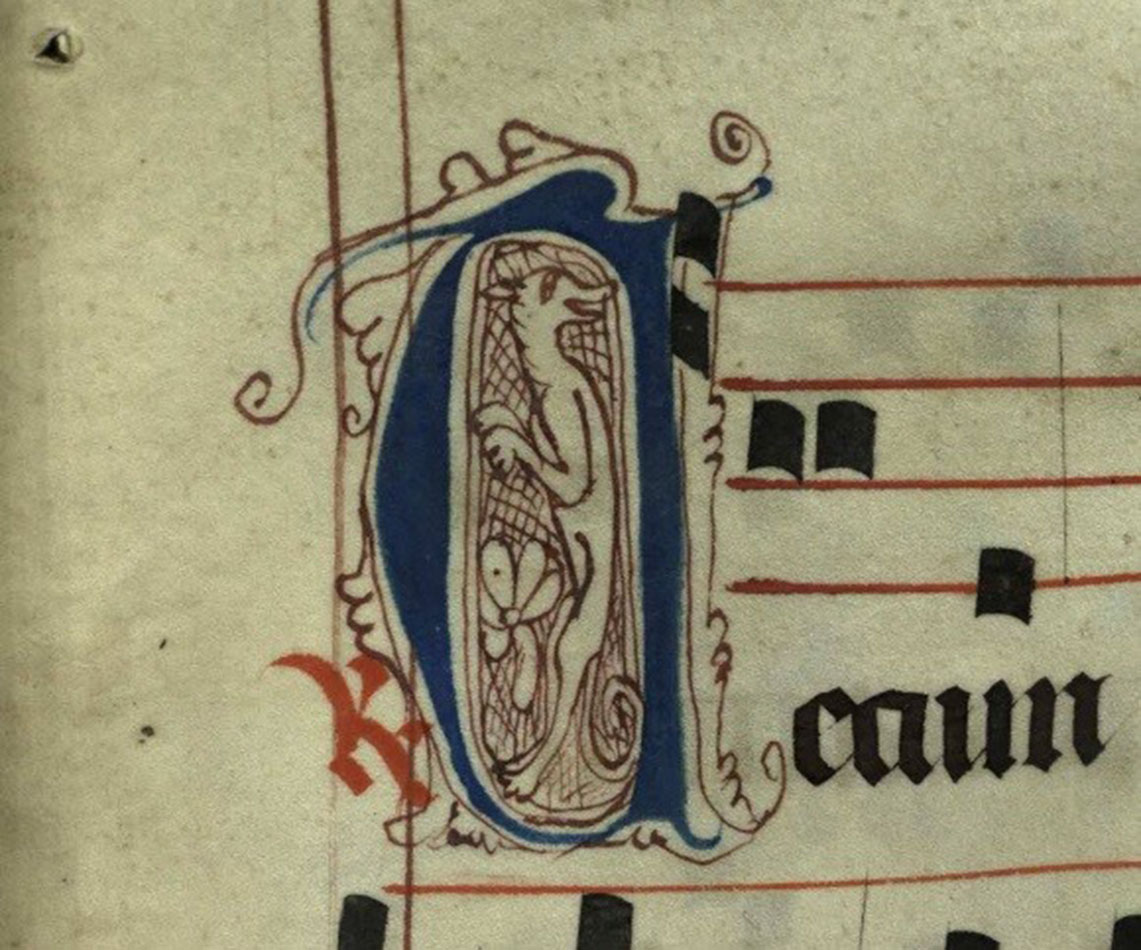
Du fait de guerre et fleur de chevalerie (1536)
French translation by Nicole Volkr de Serouville of Flavius Vegetius’s Epitoma rei militaris
Printed in Paris by Chrestian Wechel
Classmark: For U101.V5
This French translation of arguably the most widely read western military text until the early nineteenth-century provides a detailed insight into the art and machinery of war. Especially during the early modern period Vegetius’s handbook served as a model for military treatises and continued to inform warfare more generally. Chrestian Wechel’s printed edition of the manual contains 121 full-page woodcut illustrations depicting various sorts of canons, catapults, siege engines and fantastic underwater battles. The first edition in the French language appeared in 1532, the second in 1534 and the present—third—edition in 1536.
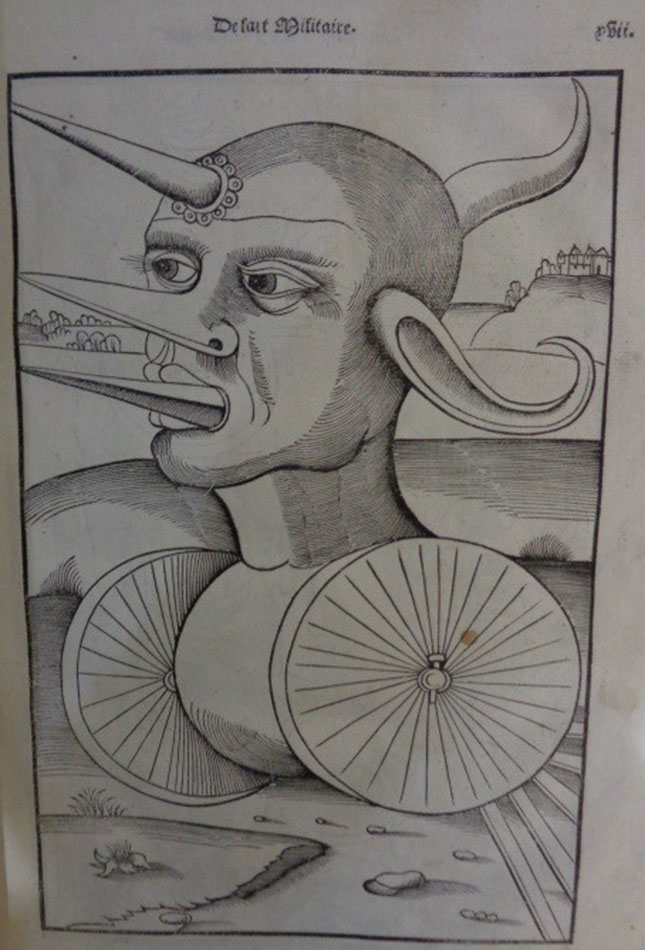
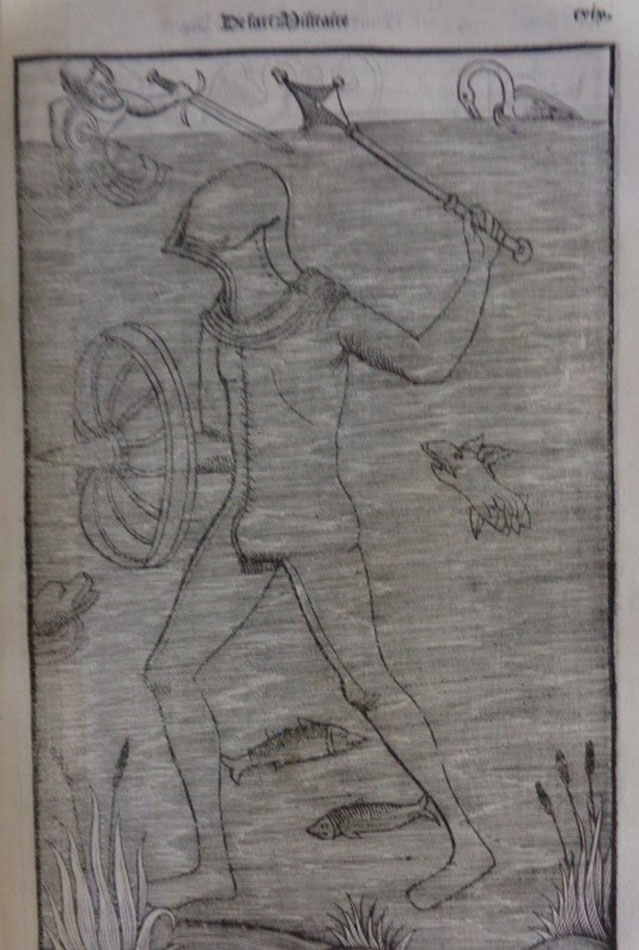
La dissection des parties du corps humain diuisee en trois liures by Charles Estienne (1546)
Printed in Paris by Simon de Colines
Classmark: TypFP.B46CE
Estienne’s illustrated manual of human anatomy is largely based on the works of the Ancient Roman physician and surgeon Galen of Pergamon. It contains some of the earliest woodcut engravings of detailed brain dissections as well as of the whole external venous and nervous system. Étienne de la Rivière, a surgeon whom Estienne met in Padua, conducted the dissections that inspired them and probably contributed to their design. Estienne was the stepson of Simon de Colines whose world-renowned printing house in Paris produced this first edition of La dissection. De Colines pioneered the use of italic types in France, which also feature prominently in Estienne’s book.
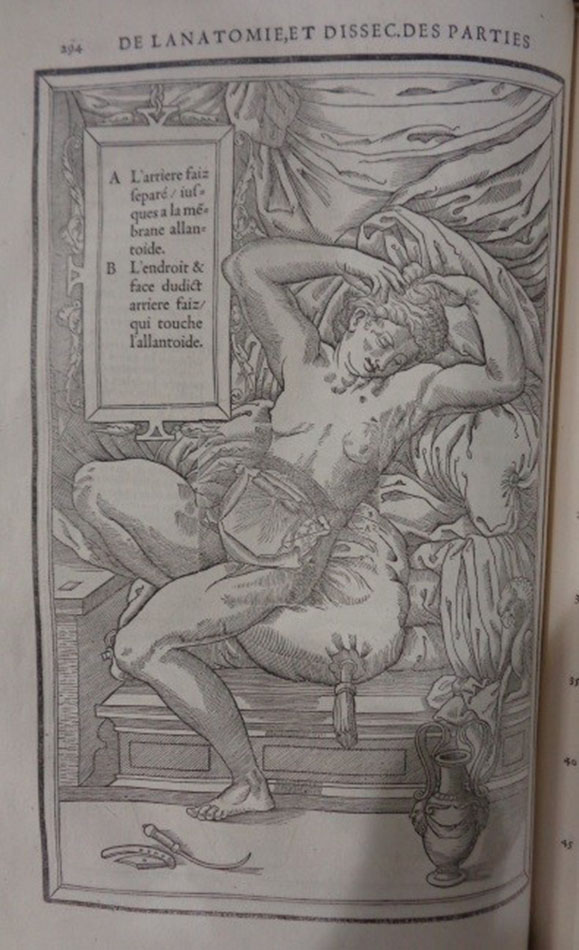
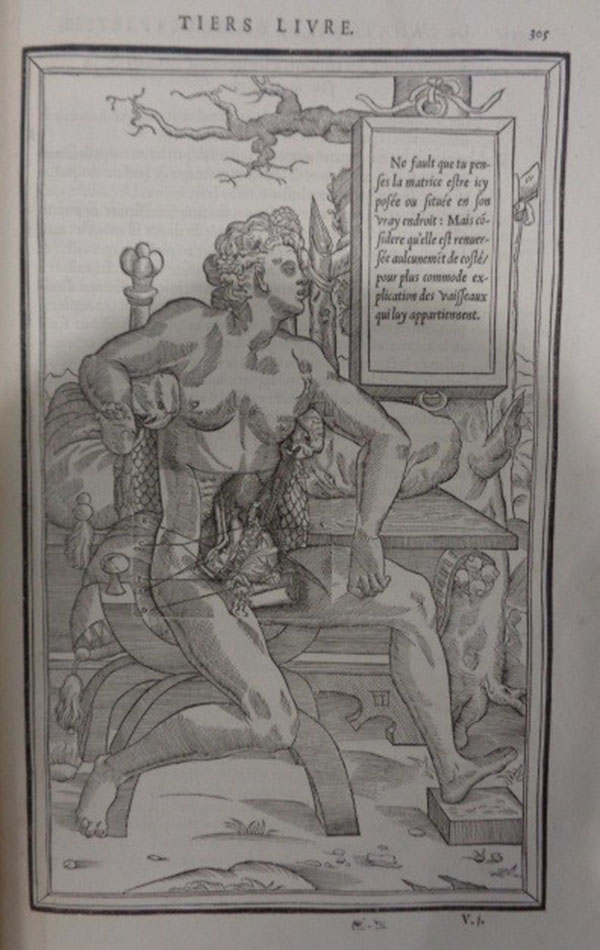
Cosmographie de Levant by André Theuet d’Angoulesme (1554)
Printed in Lyon by Jean de Tournes et Guil. Gazeau
Classmark: TypFL.B54TT
This mid-sixteenth-century itinerary takes the reader to distant lands—from Venice to Jerusalem and back to Marseilles—and warns him for moral vices along the road. The Nile crocodile on page 138 below, for example, signifies hypocrisy and is to be avoided in all circumstances. Other beasts, such as the wolf (gluttony) and the elephant (chastity), fulfil a similar symbolic vice or virtue. Cosmographie de Levant can thus be read as a moral pilgrimage. The author, André Thevet, served as royal cosmographer at the courts of four consecutive French kings, beginning with Henri II.
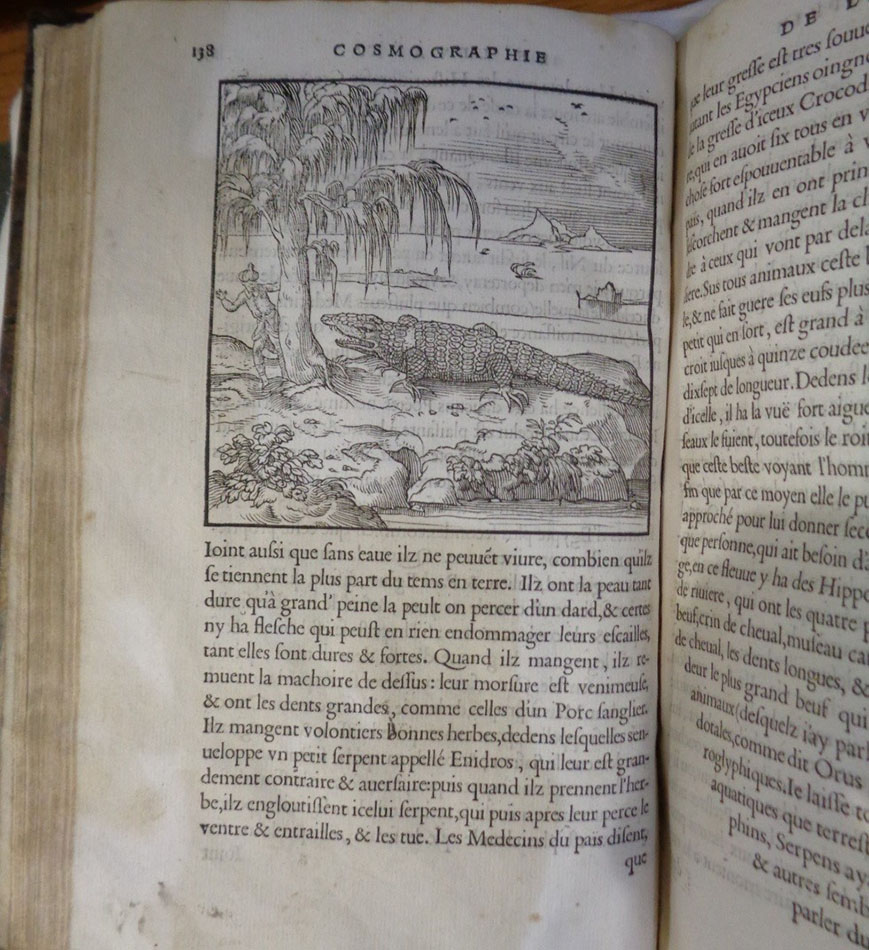
La Sainte Bible (1561)
Printed by Jean de Tournes in Lyon
Classmark: Bib BS230.B61
The Protestant printer Jean de Tournes was one of the sixteenth century’s most important and prolific continental printers. Working closely with engraver Bernard Salomon, he produced in 1561 a great folio based on a Genevan bible. La Sainte Bible contains illustrations that were inspired by the Mannerist art of the School of Fontainebleau. They served as an example for many other printers in Lyon and thus became widely distributed and copied.
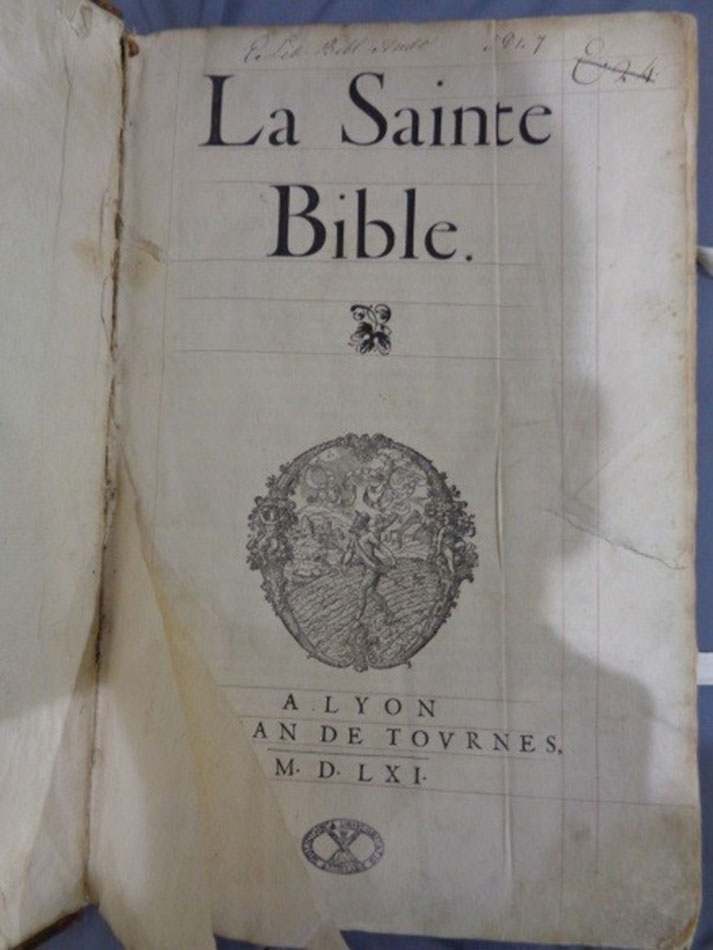
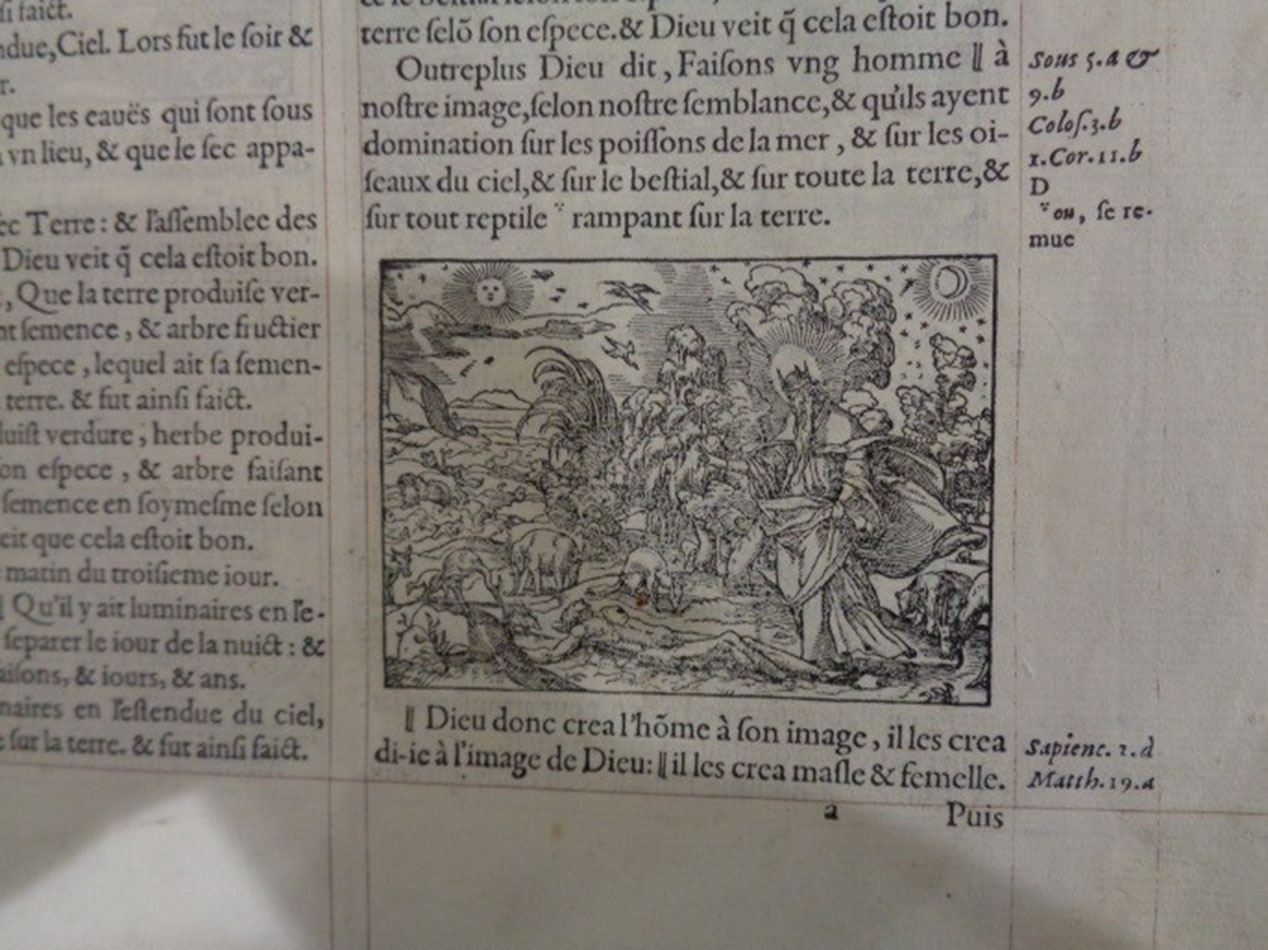
De l’Estat, de la Conference, de l’Authorité, Puissance, Prescription & Succession tant de la vraye que de la Fausse Eglise by Pierre Viret (1565)
Printed in Lyon by Claude Senneton
Classmark: TypFL.B65SV
Pierre Viret, now a little-known political and religious thinker, was one of Calvin’s closest associates. Actively engaged in bringing the Reformation to the Genevan public in 1534-5, along with Guillaume Farel and Antoine Froment, he emphasised the local congregation as the basic unit of the Reformed church. His De l’Estat … summarises this point and argues that the secular ruler should always be subject to the laws of God. Also the concept of equal justice receives his attention. Viret believes that it should be put before the law of the state under all conditions.
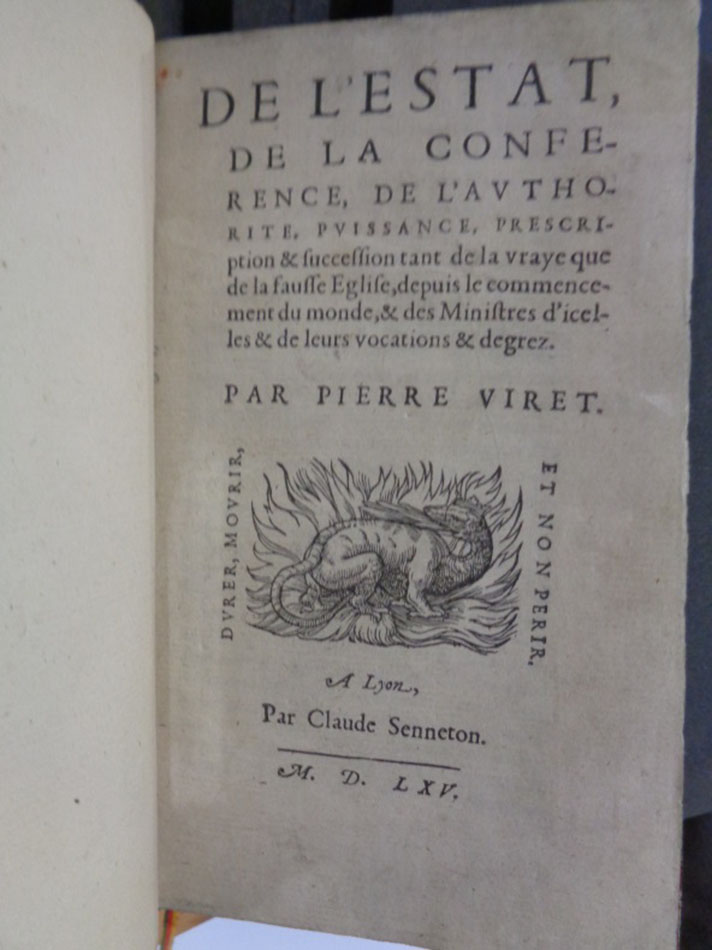
Vrankryks Lust-Spigel, Genaamd Versailles by Carel Allard (17th century)
Printed in Amsterdam
Classmark: r DC801.F67A6
Printed by the famous Dutch art dealer, cartographer and engraver Carel Allard, this book comprises a series of remarkably detailed engravings depicting life at major European courts in the seventeenth-century. Emphasis falls on the French court of Louis XIV in Fontainebleau and Versailles as well as the Dutch court of William III of England in Rijswijk and Apeldoorn. Engravings on the book’s final pages visualise life at some of the German and Scandinavian courts. Descriptions are in French, Dutch and Latin.
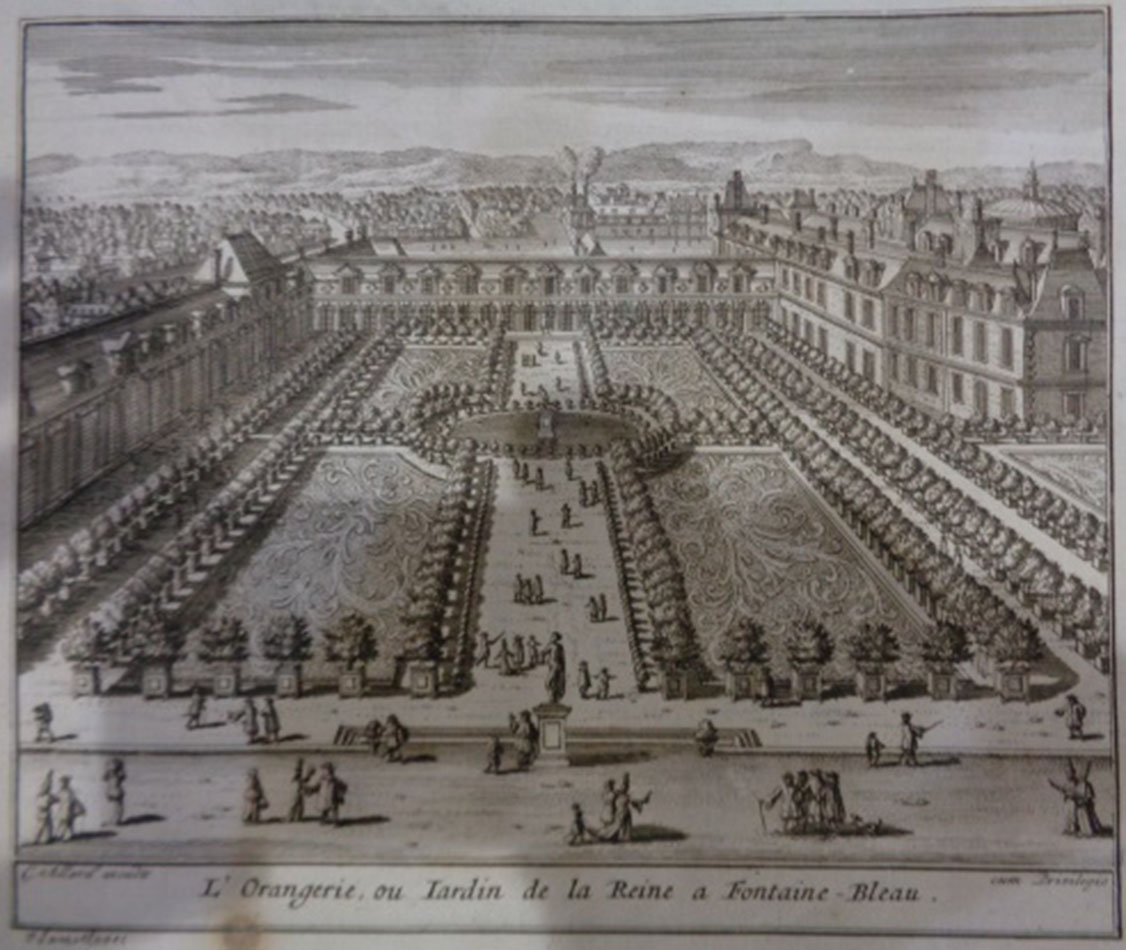
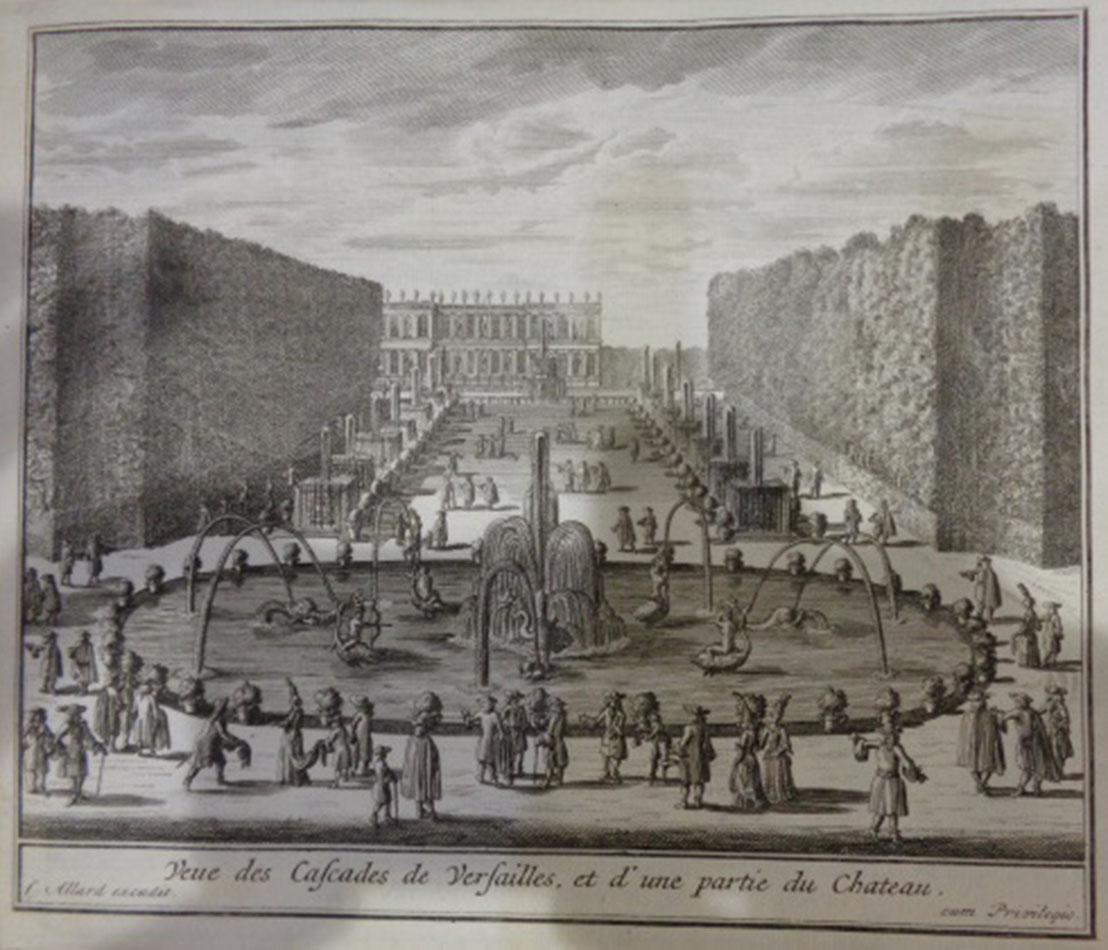
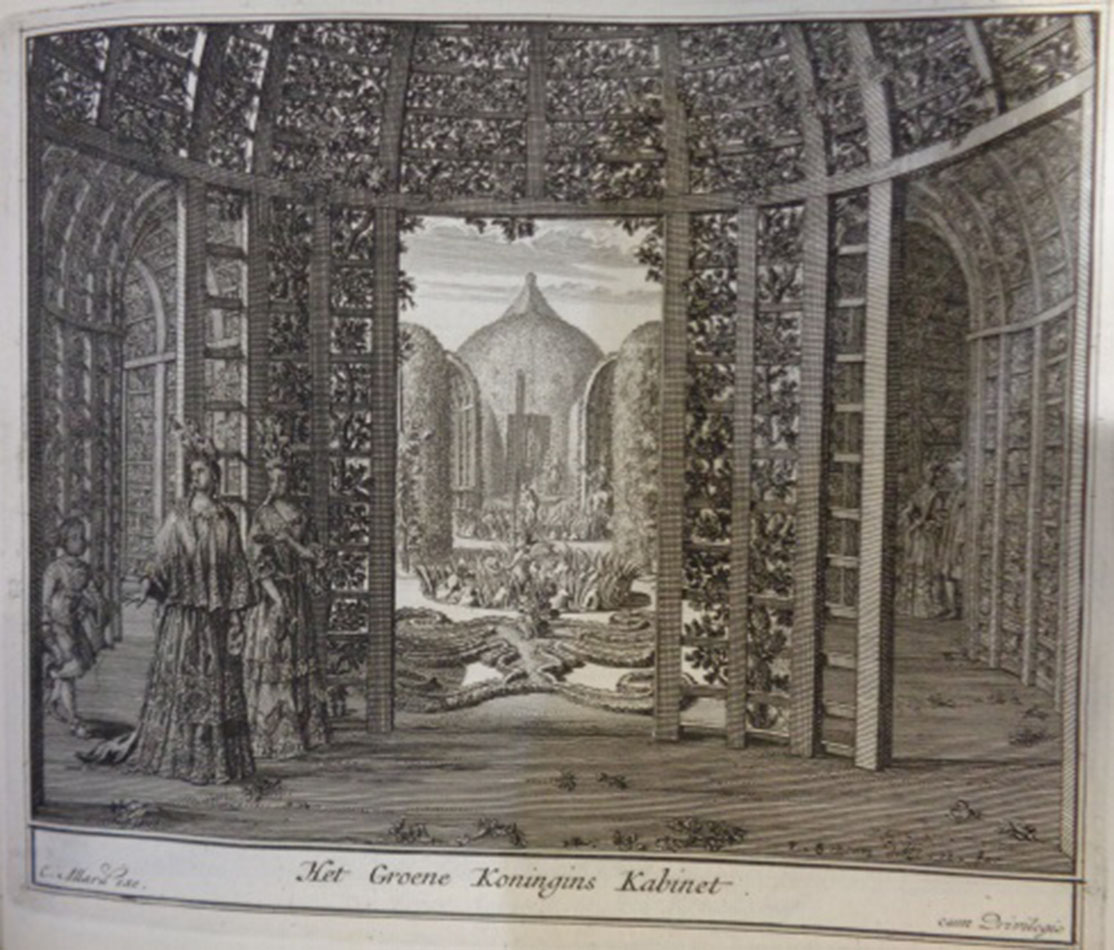
-Bram van Leuveren
Ph.D candidate in Comparative Literature